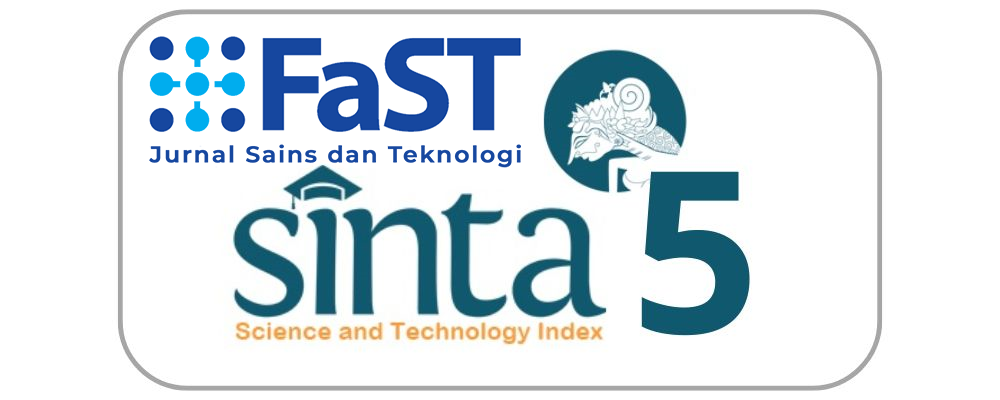Karakterisasi Protein Sorgum dan Upaya Peningkatan Jejaring Protein Sorgum Dengan Penambahan Glukosa-Oksidase [Characterization of Sorghum Protein and Improvement of Sorghum Protein Net-Working with Addition of Glucose-oxidase]
Keywords:
glucose-oxidase, kafirin, protein net-working, sorghumAbstract
Sorghum (Sorghum bicolor (L.) Moench) contains about 10% protein so it can act as a source of protein. Kafirin is a protein in sorghum distinguished on α, β, and γ-kafirin based on molecular weight differences, ease of extracting, and molecular structure. Characteristics of the sorghum protein and the ability of glucose-oxidase will form a protein network naturally between proteins or peptides resulting in polymerization. The objectives of the research were to fractionate protein of the flour of Zh-30 sorghum strain using five types of solvents. The protein fractions were analyzed for protein content and molecular weight by SDS-PAGE and evaluated for protein-network formation by glucose-oxidase, the result showed that flour protein of the sorghum Zh-30 strain consisted of five classes of proteins with a ratio of respectively albumin, globuline, kafirin 1, gluteline and kafirin 2 or cross-linked kafirin 11:11:42:7:29. Kafirin 1 content was 36.01%, kafirin 2 24.79%, gluteline 22.15%, globuline 12.81% and albumin 4.24% of total protein. Molecular weight of each protein fraction of the sorghum flour Zh-30 strain was respectively albumin 69.9 kDa, kafirin 1 which consisted α1-kafirin 22.4 kDa and α2-kafirin 23.5 kDa, globuline 121 kDa, gluteline 15.5 kDa and kafirin 2 which consisted of α1-kafirin 16.2 kDa, α2-kafirin 23.5 kDa, β-kafirin 24.6 kDa and γ-kafirin 53.6 kDa. Protein net-working was established when the glutelin fraction was treated with glucose-oxidase (MW 69 kDa from 15.5 kDa).
References
AOAC. 1975. Official Methods of Analysis of the Association of Official Analytical Chemists. AOAC Inc., Washington, Washington, D.C Bugusu, B. A., Campanella, O and Hamaker, B. R. 2001. Improvement of sorghum-wheat composite dough rheological properties and breadmaking quality through zein addition. J. Cereal Chemistry 78 (1):31-35. FAO. 1995. Sorghum and Millet in Human Nutrition. Available at: http://www.fao.org (diakses 7 Agustus 2016). Frederick, E.J. 2009. Effect of sorghum flour composition and particle size on quality of gluten - free bread. Manhattan, Kansas: Kansas State University, Master of Science. Thesis. Goesaert, H., Brijs, K., Veraverbeke, W.S., Courtin, C.M., Gebruers, K and. Delcour, J.A. 2005. Wheat flour constituents : How they impact bread quality and how to impact their functionality. Trends In Food Science and Technology 16:12-30. Joye, I. J., Lagrain, B and Delcour, J. A. 2009. Use of chemical redox agents and exogenous enzymes to modify the protein network during breadmaking- a-review. J. Cereal Science 50:11-21. Kebakile, M. M. 2008. Sorghum dry milling processes and their influence on meal and porridge quality. Pretoria, Republic of South Africa : Finally report : Department of Food Science, Faculty of Natural and Agriculture Science, University of Pretoria. Mudjisihono dan Suprapto, H. S. 1987. Budidaya dan pengolahan sorgum. Jakarta: Penebar Swadaya. Musigakun, P. dan Thongngam, M. 2007. Characteristics and functional properties of sorghum protein (kafirin). J. Kasetsart 41: 313-318. Nour, I. N. A., Peruffo, El. A. D. B and Curioni, A. 1998. Characterisation of sorghum kafirins in relation to their cross-linking behaviour. J. Cereal Science 28:197-207. Oria, M.P., Hamaker, B. R., Axtell, J. D., and Huang, C. P. 2000. A highly digestible sorghum mutant cultivar exhibits a unique folded structure of endosperm protein bodies. Department of Food Science Purdue University, West Lafayette, IN 47907-1160. Avaible at www.pnas.org/cgi/doi/10.1073/pnas.080076297 (diakses Januari 2010). Rasiah, I. A., Sutton, K. H., Low, F. L., Lin, H.M and Gerrard, J.A. 2005. Crosslinking of wheat dough proteins by glucose oxidase and the resulting effects on bread and croissants. J. Food Chemistry 89:325-332. Renzetti, S., Behr, J., Vogel, R. F and Arendt, E. K. 2008. Transglutaminase polymerization of buckwheat (Fagopyrum esculentum Moench) protein. J. Cereal Science 48:747-754. Rooney, L. W. and Saldivar, S. 2000. Sorgum. Dalam Handbook of Cereal science and technology. Kulp,K. and J. G. Ponte (editor). New York: Marcel Dekker, Inc. Santosa, D. D. S. and Hoeman S. 2009. Modified starch of sorghum mutant line Zh-30 for high fiber muffin products. J.Atom Indonesia 35 (1):1-9. Sewry, P. R. and Halford, N. G. 2000. The prolamine storage proteins of sorghum and millets. Bristol UK: Long Ashton Reseach Pub. Shull, J. M., Watterson, J. J. and Kirleis, A.W. 1991. Proposed nomenclature for the alcohol-soluble protein (kafirins) of Sorghum bicolor (L.) Moench based on molecular weight, solubility and structure. J. Agriculture Food Chemistry 39: 83-87. Singh, N., Kaur, L and Singh, S. K. 2006. Relationships between physical. morphological, thermal, rheological properties of rice starches. Food Hydrocolloids 20:532-542. Suarni. 2004. Pemanfaatan tepung sorgum untuk produk olahan. J. Litbang Pertanian 23(4):145-151. Sultan, W. J. 1986. Practical Baking. New York: Van Nostrand Reinhold Pub. Wall, J.S., Cooker, L. A and Bietz, J. A. 1988. Structure and origin of maize endosperm alkohol-insoluble glutelin. J. Agriculture and Food Chemistry 36(4):722-728.
Downloads
Published
Issue
Section
License
“Authors who publish with this journal agree to the following terms:
1) Authors retain copyright and grant the journal right of first publication with the work simultaneously licensed under a Creative Commons Attribution License (CC-BY-SA 4.0) that allows others to share the work with an acknowledgement of the work's authorship and initial publication in this journal.
2) Authors are able to enter into separate, additional contractual arrangements for the non-exclusive distribution of the journal's published version of the work (e.g., post it to an institutional repository or publish it in a book), with an acknowledgement of its initial publication in this journal.
3) Authors are permitted and encouraged to post their work online (e.g., in institutional repositories or on their website). The final published PDF should be used and bibliographic details that credit the publication in this journal should be included.”



